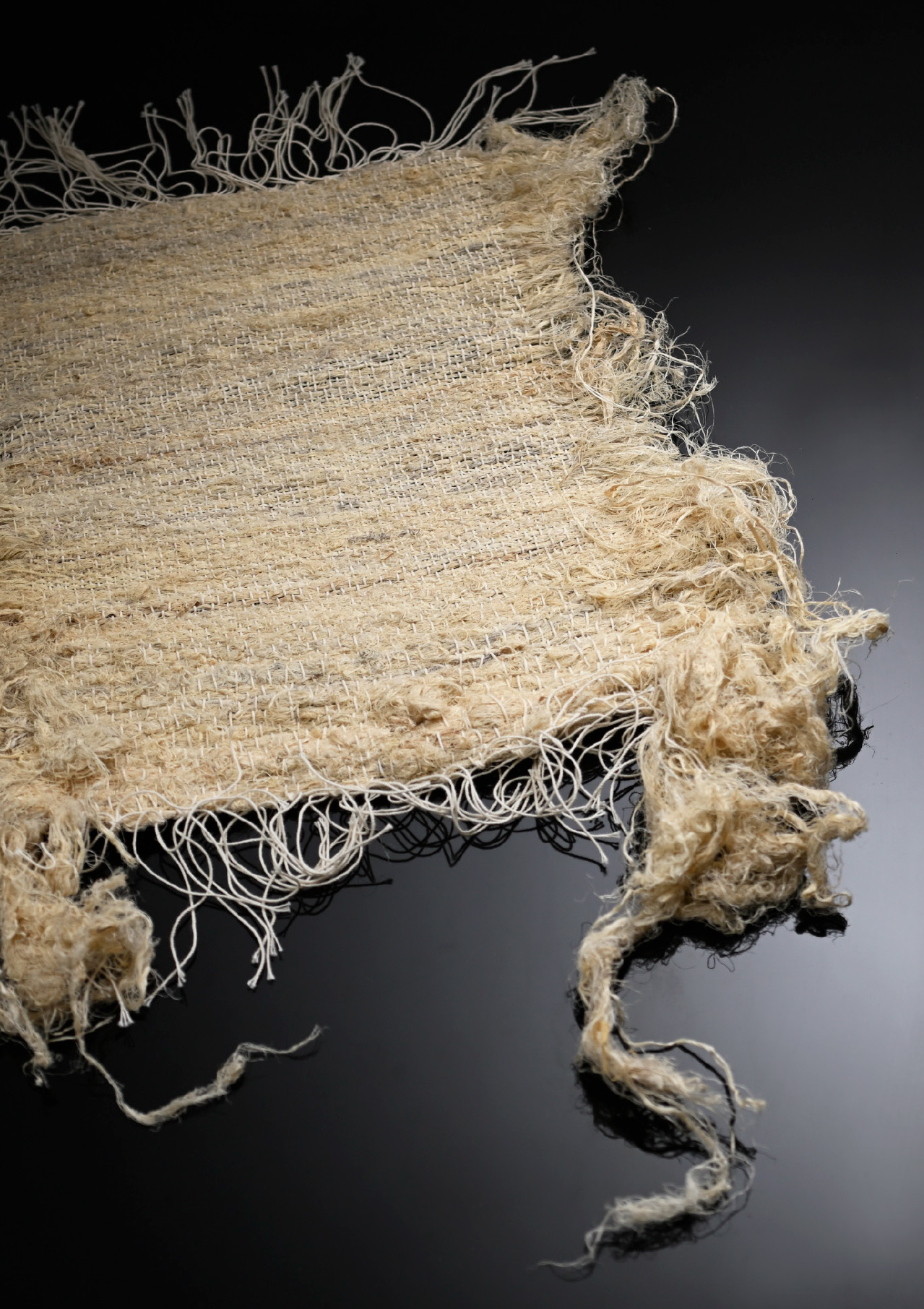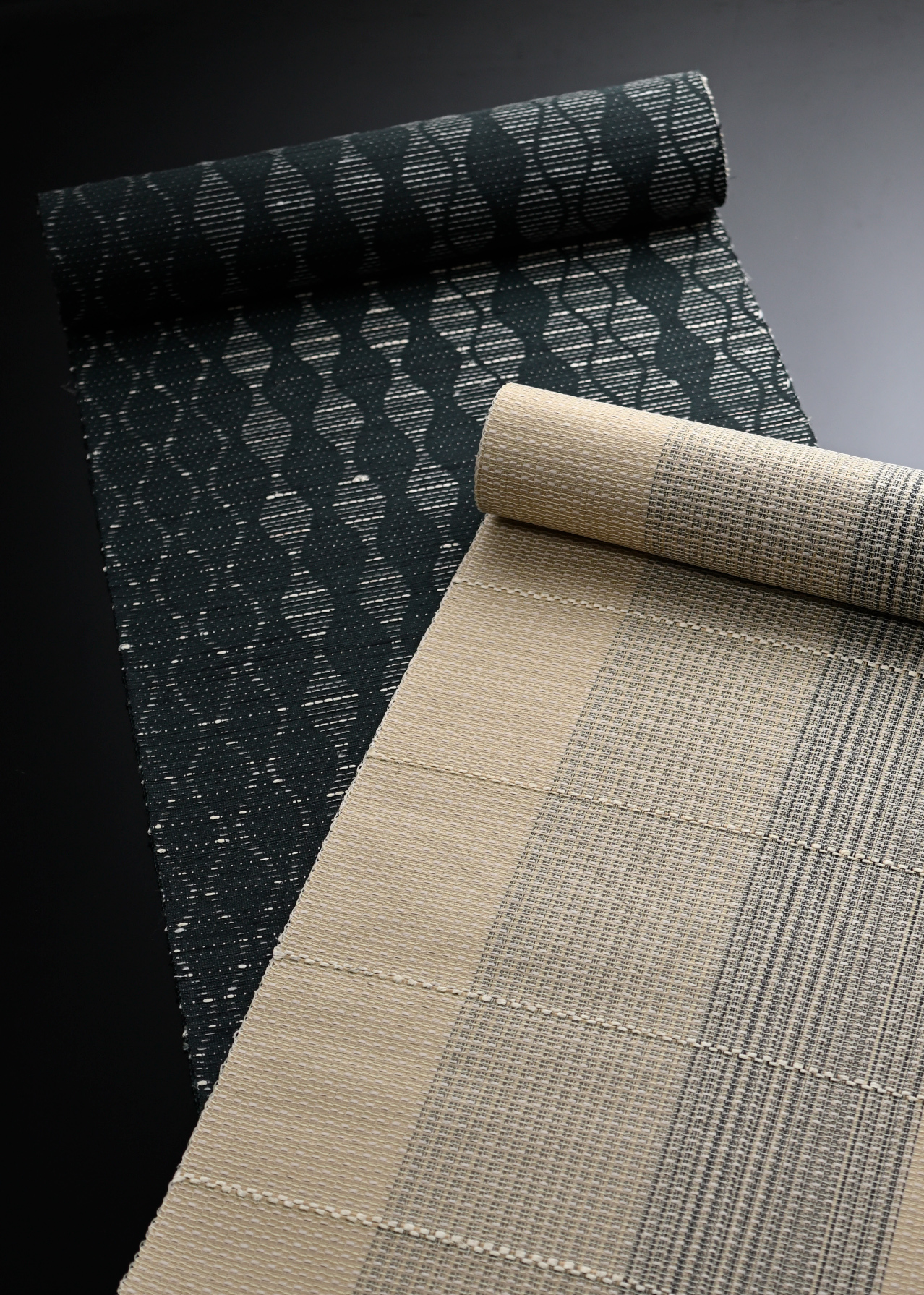丹後藤布 丹後藤布振興会
TANGO-FUJIFUAncient textile made from wisteria vines 1
1
- 藤の蔓の皮から糸の繊維を取り出す際に出る“くず”を織り込んだ布。本来は捨てられてしまうものを活用した独特な表情は、アートと呼びたくなる美しさ。
藤布は、九州から東北地方まで広く自生する藤の蔓の皮から繊維を取り、糸を績んで織られる古代布のひとつで、万葉集にも詠まれています。周囲の木の幹に絡みついて成長する藤の強い生命力がその布にも宿ると信じられ、長らく日本全国の山村で織られてきました。明治時代(19世紀)になると麻や綿の普及にともない生産が途絶えたとされましたが、1962年に行われた民族資料調査により、丹後の山里「世屋」地域において途絶えることなく藤布が生産されていたことが判明しました。現在は同じ丹後の地でその技術が大切に受け継がれ、自然美の力強さと優美さを兼ね備えた素材として、きもの好き憧れの帯をはじめ、アートパネル、パーテーション、ポーチなど、さまざまなアイテムに発展しています。
Fujifu is an ancient textile woven with fibers from the skin of the wisteria vine, which grows widely from Kyūshū to the Tōhoku region. It is even mentioned in the Manyōshū, the oldest collection of Japanese poetry. The cloth is believed to retain the strength of the wisteria vine, which grows in entwined around tree trunks. Fujifu has been woven in mountain villages throughout Japan for centuries. In the Meiji era (19th century), production was cut off due to the spread of competing materials such as hemp and cotton, but survey of folk materials in 1962 revealed that fujifu was still continuously produced in the Seya area of in the hillside village of Tango, where the technique continues to be carefully preserved. As a material combining strength with grace and natural beauty, it has evolved into use for various items such as obis, art panels, partitions and pouches.
 2
2
- : 経糸に絹糸、緯糸に藤糸を組み合わせ、金糸や銀糸を織り込んだ高級帯地
(1,2 すべて丹後の藤布遊絲舎)
1: A cloth woven with "waste" byproduct produced when the fibers are removed from the skin of the wisteria vine. This unique expression makes use of what is usually discarded to create artistic beauty. 2: A high-quality obi made by weaving silk and weft together with wisteria and gold and silver threads. (1,2 Yūshisha)

